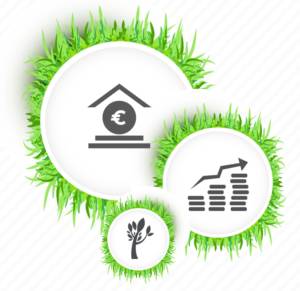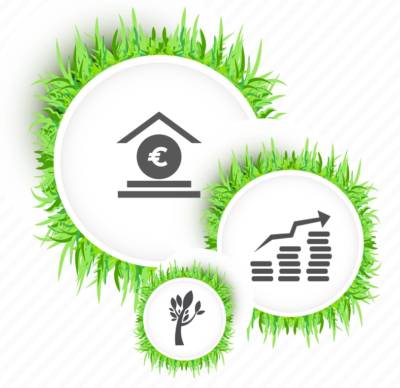
European Union’s (EU) priority is to achieve a greener and smarter Europe. The circular economy (CE) has been regarded as a powerful tool to reduce environmental impact, increase EU’s competitiveness, and stimulate growth and new job creation. In December 2015, the EU adopted a Circular Economy Action Plan to be able to materialize this aim. Three years after adoption, the implementation of Circular Economy Action Plan has been fully completed. However, future challenges have been reported to remain, which hinder the shift to a fully sustainable economy. [1]
To further accelerate the transition to a circular economy, the EU has increased its investment instruments for circular economy innovation in industries and public enterprises. Through the Joint Initiative on Circular Economy (JICE), provided by the EU’s largest national banks and the European Investment Bank, at least EUR 10 billion of investments over the next five years (2019 – 2023) will be made available for circular economy projects and programmes in the EU in the fields of circular design, production, use and life-extension, value recovery and ITC support. [2]
Targeting (analyzing) beyond all stages of the value chain and lifecycle of products and services:
Plurality of definitions exist what constitutes a circular economy. The JICE recognizes CE as strategy to prevent and eliminate waste, increase resource efficiency and re-use of the end-of-life products in production cycles. This definition captures the added value of CE to recycling that is to maintain the economic value of products as long as possible at all stages of their value chain and lifecycle. This principle should therefore need not be neglected when deciding which projects to be financed.
Given that products’ supply chain and life cycle of most industries in the EU are connected to regional and international markets [3], JICE ought to place special attention to the environmental and social problems that may be caused in developing countries by their financed CE projects, thus add spatial dimensions in their evaluation practices.
These initiatives should not only focus on the technical side of products’ circular design and production, but also on the business model types and final beneficiaries. In the past decade, numerous CE business initiatives emerged based on a collaborative consumption (sharing economy), that could lead to reduced consumption patterns and more sustainable future [4]. This innovative paradigm shift in the consumption culture that focuses also on the social impacts not only on industrial economic competitiveness and legal compliance, should not escape the radar of JICE.
How to measure what is an environmentally and socially beneficial CE project? There are numerous methods out there, claiming to measure all impacts from the complete life cycle of products. Therefore, when evaluating a CE project proposal, not only their financial feasibility should be assessed, but sound methods must be used to ensure that environmentally and socially beneficial projects are financed.
JICE is a big leap towards improving access to finance for circular economy projects which hopefully would lead to new knowledge insights and perhaps inspire other financial institutions to provide finance for CE projects in developing countries, where it is projected that the population growth, living standards and consumption will boom in the near future [5]. However, careful evaluation of the economic feasibility and socio-ecological impacts of the CE project proposals is needed and appropriate methods for evaluation and monitoring should be applied. The ReTraCE project aims to produce improved methods and experts, equipped with the much needed interdisciplinary knowledge, to support and navigate the smart design and critical evaluation and monitoring of CE projects.
[1] EC.Europa.EU. (2019). Circular Economy Strategy – Environment – European Commission. [online] Available at: https://ec.europa.eu/environment/circular-economy/index_en.htm [Accessed 7 Aug. 2019].
[2] European Investment Bank. (2019). EUR 10 billion to support the Circular Economy in the EU. [online] Available at: https://www.eib.org/en/press/all/2019-191-eur-10-billion-to-support-the-circular-economy-in-the-eu.htm?fbclid=IwAR1p9eCj96caCS4TqrdwYiyHu_qHTOT3Z8qtyBrREbnqBR3esk6Gg8cp6vw [Accessed 7 Aug. 2019].
[3] Korhonen, J., Honkasalo, A. and Seppälä, J. (2018) ‘Circular Economy: The Concept and its Limitations’, Ecological Economics. Elsevier B.V., 143, pp. 37–46. doi: 10.1016/j.ecolecon.2017.06.041.
[4] Hamari, J., Sjöklint, M. and Ukkonen, A. (2016) ‘The sharing economy: Why people participate in collaborative consumption’, Journal of the Association for Information Science and Technology. doi: 10.1002/asi.23552.
[5] Bongaarts, J. (2016) ‘Development: Slow down population growth’, Nature. doi: 10.1038/530409a.

